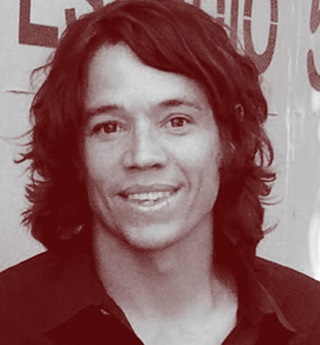Wine Industry Trends with Three Thieves Winemaker Charles Bieler
Oct. 18, 2016

 In the world of winemaking, a high-quality wine boils down to three things: oak, time and terroir. Sought-after wines age in oak, adding desirable flavors and much needed oxygen, which gives the wine a smooth essence–both in body and in spirit. A longer aging time reduces acidity and tannins, making the wine smoother. Finally, every wine is shaped by the environment it’s produced in, making terroir a key component to superior flavors.
In the world of winemaking, a high-quality wine boils down to three things: oak, time and terroir. Sought-after wines age in oak, adding desirable flavors and much needed oxygen, which gives the wine a smooth essence–both in body and in spirit. A longer aging time reduces acidity and tannins, making the wine smoother. Finally, every wine is shaped by the environment it’s produced in, making terroir a key component to superior flavors.
Making a high-quality wine–without the benefit of a few of those essentials–takes a unique level of winemaking vision and execution.
The latter method is Charles Bieler’s life as the winemaker of Three Thieves, recently listed as one of Impact’s “Hot Prospect” wines, highlighting emerging stars on the shelves.* Three Thieves is a popular selection at a popular price point–under $10. Bieler–son of Philippe Bieler, the founder of Bieler Père et Fils where Charles serves as winemaker–also produces the eponymous Charles & Charles.
We had the pleasure of sitting down with Bieler recently during a visit to Philadelphia and discussed a number of topics, including how he and his producing partners are able to deliver high-quality flavors at a lower price to consumers.
Breakthru: Three Thieves is a wine listed at a very affordable price point, but its flavors resemble a higher level of flavor. Quite simply–how do you do it?
Charles Bieler: Ultimately, wine is an agriculture product. The vineyards that we’re able to draw from for Three Thieves are generally for lower-tier price points. We’re able to take the cream of the crop from some over-performing vines from those vineyards. We launched Three Thieves in 2002, and in that first year we came out with a liter jug of Zinfandel. It was a total lark to make fun of the wine industry by putting delicious Zinfandel into a jug. Jug wine was the icon of cheap and bad and we were playing with all of that. It launched this whole series of wines that’s been very exciting.
Breakthru: Rosé has had a huge year, hasn’t it?
CB: Rosé matters a lot to me. That’s something that actually finally come around. It’s like the overnight success that took 15 years. When I started in the business, I worked with my dad, who had a little winery in Provence. The first obstacle was to convert Americans to understand dry rosé. In 1999, I bought an Old Cadillac Deville convertible, painted it pink and lived in it for two years. When I wasn’t in the winery, I was living in the car, driving all over the country trying to convert people to think about rosé and taste rosé. So I beam when I walk into stores and I now see huge rosé sections.
Breakthru: What makes red blends a go-to choice for newer wine drinkers?
CB: I think there’s been this real approachability. I think a lot of red blends are quite sweet, actually. Our Charles & Charles version blends Cabernet and Syrah. The Cabernet has this incredible structure and the Syrah is sweet. Together, it’s like chocolate and peanut butter.
Breakthru: The Columbia Valley is becoming a wine region that’s very popular across the country. What is your take on that trend?
CB: What’s great about Columbia Valley vineyards is there is a balance between heat of the day and coolness of the night. It could be 100 degrees during the day and at night it could drop down to 50. The big temperature shift allows for the vine to shut down in the evenings, which develops acidity. If it’s hot all the time, grapes tend to lack acidity. It’s not more extreme than Napa Valley, but the cost of fruit in Napa Valley is a hell of a lot higher. There’s an hour and a half more sunlight on average in Napa Valley than in the Columbia Valley.
Breakthru: Are you working on any fall flavors?
CB: Not really. There’s not a flavor theme that I have this time of year. Every program of wine–hopefully–has a very unique presentation and flavor profile. In our red wines, we ferment all native yeast and the idea is we want wines to be distinct. We’re interested in having no commonality among our wines. I want the maximum diversity.
Breakthru: What are some upcoming projects that you’re working on?
CB: One thing I’m excited about is we’re doing some co-fermentation for the first time in my life and I don’t really know many people who do it at this price point. We’re doing a co-fermented white wine–a Pinot Grigio, Riesling, Sauvignon Blanc, Moscato co-fermentation. So that means all the grapes are being picked roughly at the same time. The tanks are being kept cold until everything is in and then it’s all going to ferment together as opposed to blending later in the winemaking process.
* http://www.shankennewsdaily.com/index.php/2016/09/13/16788/impacts-hot-prospect-wines-showcase-industrys-emerging-stars/
(Photos courtesy of http://bielerandsmith.com/ and http://www.threethieveswines.com/the-boys/charles-bieler/)